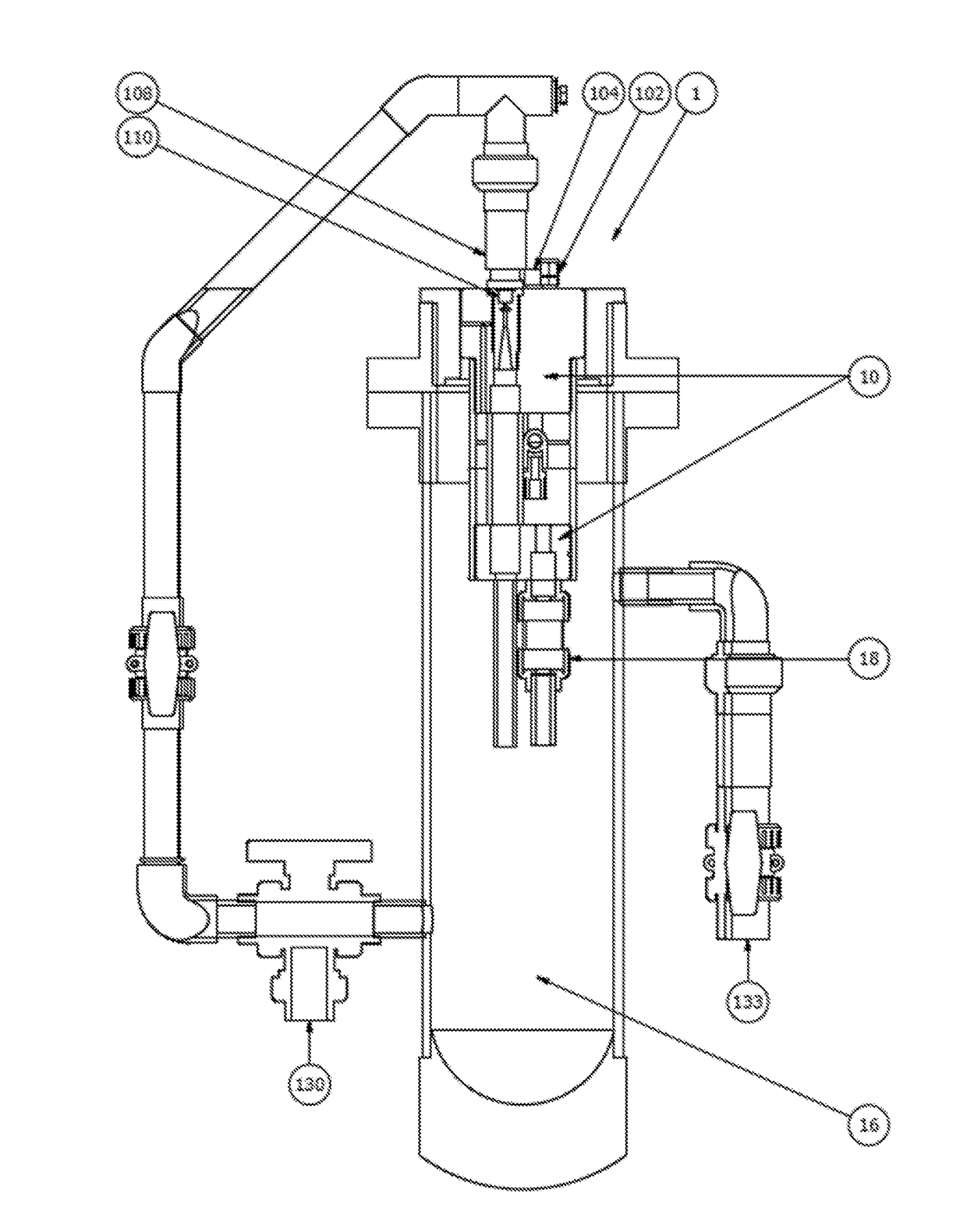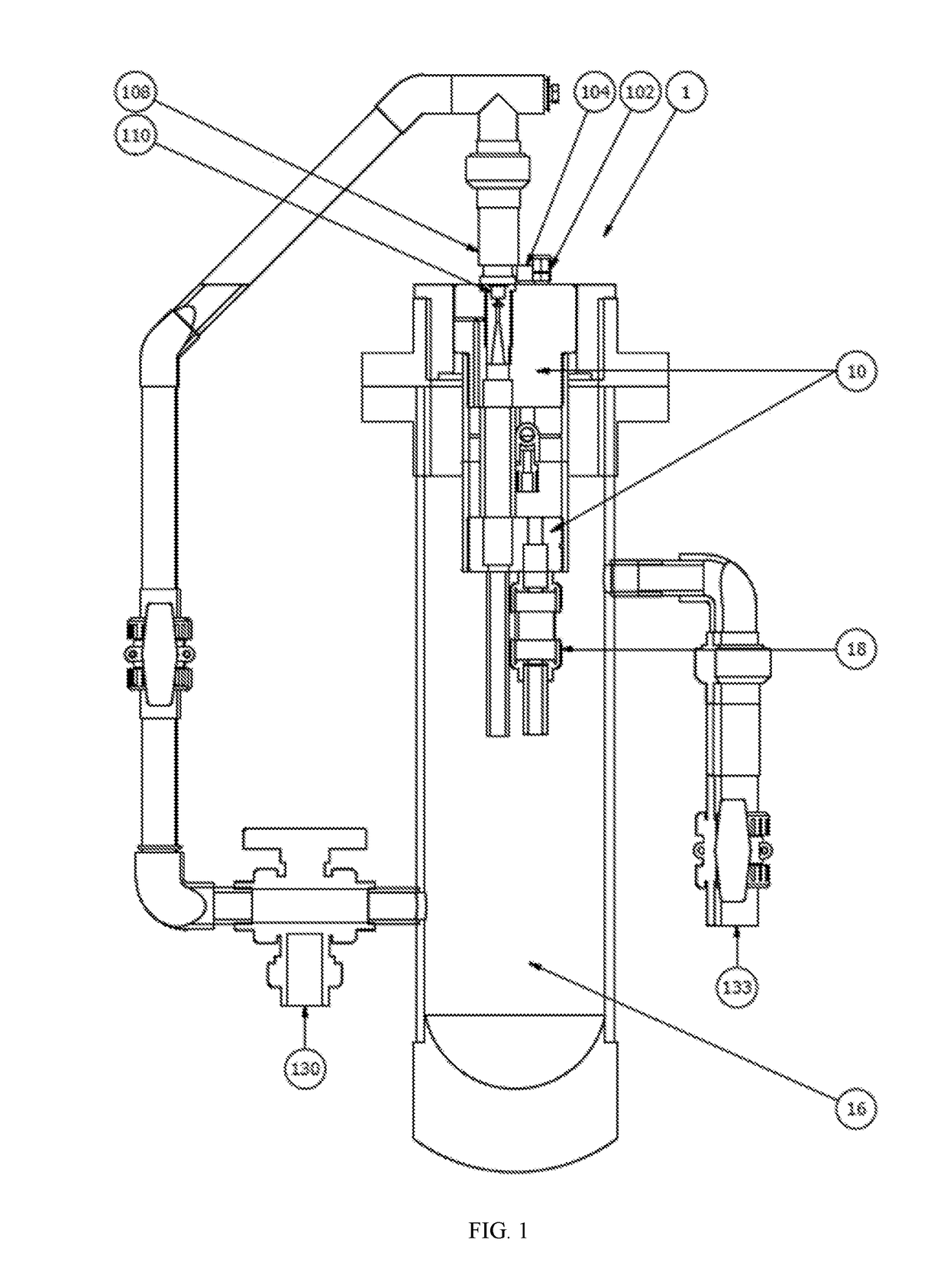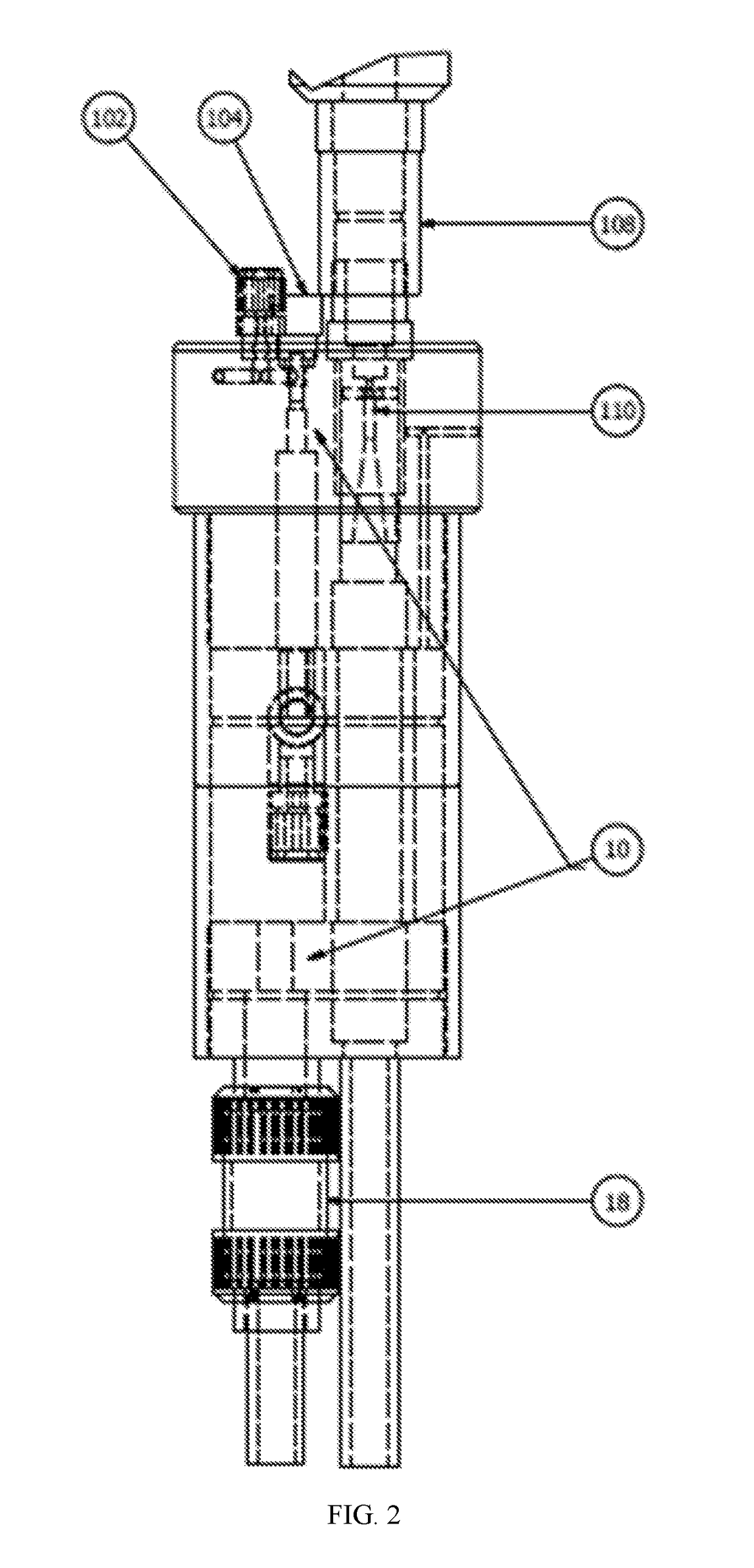Chlorine dioxide generation
a technology of chlorine dioxide and ac reaction chamber, which is applied in the direction of chlorine oxides, liquid-liquid reaction processes, chemical/physical/physicochemical processes, etc., can solve the problems of increased operational hazards, clo2 concentration in the ac reaction chamber can greatly exceed this value, and achieve the effect of facilitating safe clo2 generation
- Summary
- Abstract
- Description
- Claims
- Application Information
AI Technical Summary
Benefits of technology
Problems solved by technology
Method used
Image
Examples
example 1
Process Flow Interruption
[0031]After the device had produced ClO2 for 30 minutes, the process water was turned off to simulate a system that was shut down before it had time to be purged or emptied. With the process flow supply interrupted, the flow to the eductor was also interrupted, and the vacuum on the reaction chamber halted. At this point, the float-dependent valve 18 opened and allowed the contents of the reaction chamber to slowly drain into the flow chamber. This safety measure minimizes the risk of ClO2 vapors building up in an enclosed reaction chamber volume.
example 2
Low Acid Flow and Extended Dwell Time
[0032]In a more extreme set of circumstances, the acid feed was lowered to simulate a system that had not been properly configured to correct precursor feed ratios. When the acid feed is low, the ClO2 concentration within the reaction chamber can be considerably higher if there is sufficient dwell time to convert the chlorite to ClO2. In a shutdown scenario, the ClO2 can continue to form over time after shutdown. Under these conditions, the float-dependent valve 18 sufficiently drained and diluted the reaction chamber 10 contents into the flow chamber 16 before any decomposition events occurred.
example 3
Pressure Event Within the Reaction Chamber
[0033]A test was conducted in which water was forced through the acid feed at a rate of 310 gallons per day (GPD) while the pressure of the reaction chamber was monitored. With the float-dependent valve 18 in place, the maximum pressure achieved in the flow chamber was 1.2 psig. The check valve was then replaced by a plug to prevent venting, and the test was repeated. Applying the same flow rate of 310 GPD, the reaction chamber pressure increased to 4.4 psig, which is a nearly 4 times greater pressure differential between the reaction chamber 10 and the flow chamber 16. In these tests, the flow chamber 16 was being emptied to an open container, and did not have significant back pressure.
[0034]The iteration without the float-dependent valve 18 is similar to traditionally constructed AC ClO2 generators, in which the reaction chamber consists of only two feed inlets and a single outlet being diluted into a process water supply. Therefore, in th...
PUM
| Property | Measurement | Unit |
|---|---|---|
| vacuum | aaaaa | aaaaa |
| concentration | aaaaa | aaaaa |
| pressure | aaaaa | aaaaa |
Abstract
Description
Claims
Application Information
 Login to View More
Login to View More - R&D
- Intellectual Property
- Life Sciences
- Materials
- Tech Scout
- Unparalleled Data Quality
- Higher Quality Content
- 60% Fewer Hallucinations
Browse by: Latest US Patents, China's latest patents, Technical Efficacy Thesaurus, Application Domain, Technology Topic, Popular Technical Reports.
© 2025 PatSnap. All rights reserved.Legal|Privacy policy|Modern Slavery Act Transparency Statement|Sitemap|About US| Contact US: help@patsnap.com



